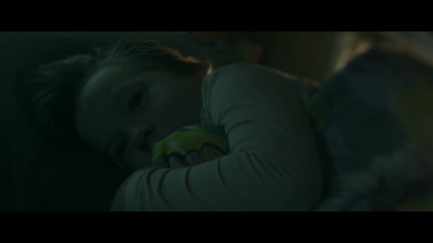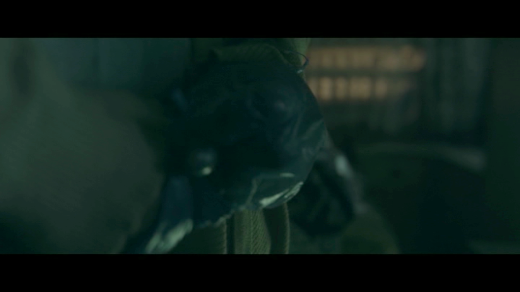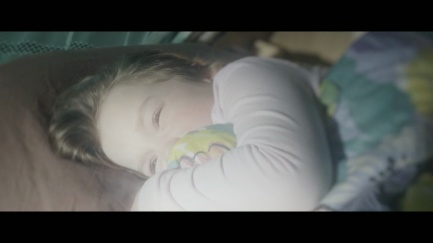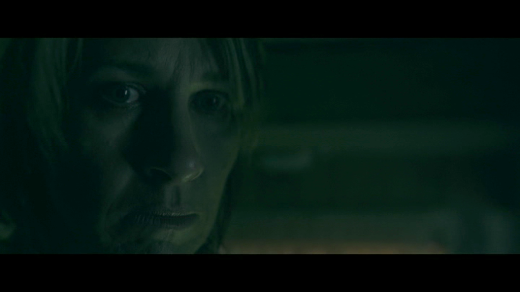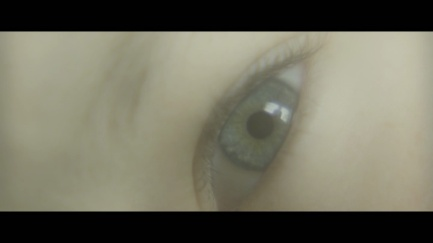Eleven Thirty
Eleven Thirty tells the story of a family struggling to cope with life lived in temporary accommodation, as the father has to leave for a temporary job away from his wife and their two daughters, Jessie and Sally. This film was a student project involving a combination of professional and student filmmakers. Students were responsible for the location recording and the early stages of sound editing. My involvement came at the post-production stage. There were problems with some of the location sound recorded by the students, due to poor technical quality, the inclusion of noticeable background sounds, or occasionally insufficiently clear diction on the part of the actor. Many of the problems related to noisy recordings. There were also some lines of dialogue that were potentially problematic, either because of the quality of the recording or the lack of clarity in the actor’s performance of the dialogue.
The typical problems included:
- Dialogue recordings were very quiet compared to background noises.
- Fluctuating background noise levels, whether from changing the microphone direction or from the riding of levels during the take.
- Dirty dialogue delivery, for example, where a line of dialogue is recorded along with another sound, such as the scrunching of paper. Where this happens it is customary to record a new, clean version of the line, either during production as an alternative take, or in post-production as Automated Dialogue Recording (ADR).
Two scenes will be discussed here. The first scene contains two examples which relate to dialogue intelligibility (see Clip 3 and Clip 4). Listening for dialogue intelligibility means the focus is purely on the dialogue delivery, in terms of both sound quality and clarity of enunciation. It is notoriously difficult to convince anyone who has been involved with the film for a long time, who has heard the material numerous times, and may have been intimately involved in the production, that a particular line of dialogue is proving to be difficult to understand for people hearing it for the first (and in all likelihood, only) time. It can be likened to an optical illusion, such as a 3D poster or a Rorschach image. Once the image is recognised, it is difficult to erase from the mind. This was the case with two lines of dialogue in this particular film.
In order to corroborate or disprove my own opinion, the two lines: “Mum’s sad again isn’t she?” (02:40) and “Lucky there’s a babysitter...” (03:11) were played to a colleague who had no involvement with the film and no prior knowledge of the script. He did not understand what was being said either. We both agreed that the subsequent line in each case and the intonation of each made sufficiently clear the kind of thing that had been said. This made the lack of intelligibility of the preceding lines of dialogue less of an issue. Replacement dialogue could have been used for reasons of clarity, but it would have been at the expense of production sound, so the ADR alternative was not considered for the final mix.
Dialogue Intelligibility – Icon, Index and Symbol
Issues related to the recording of particular sound elements, such as dialogue, the prevalence of background sounds caused by the impact of the filmmaking process on the location recordings, and the construction of meaning through the soundtrack, can be examined using elements of Peircean semiotics. In this film, as with many others, dialogue intelligibility was critical, conveying important elements of the story. Since one of the actors was very young, it made the enunciation of some of her lines of dialogue potentially problematic.
Michel Chion, building on the work of Pierre Schaeffer (Schaeffer 1967), described different listening modes which relate to the purpose of the listening. For example, "causal", which seeks to gather information; "semantic", which seeks to decode the sounds; and "reduced", which focuses on the characteristics of the sound itself, rather than the meaning or cause (Chion 1994: 25-31). The types of listening required to make judgements on the merits of particular sound treatments, editing decisions and alternatives can be analysed in terms of the Peircean model. As with Chion’s listening modes, Peirce’s semiotics provides the vocabulary to distinguish the properties of the sound (reduced/iconic), the reference to the object that makes the sound (causal/indexical), and the learned associations generated from the use of the sound (semantic/symbolic).
First, the quality of the voice recording was examined, focusing on the iconic properties of the voice both alone and in the context of the other background sound elements. Various attempts were made to enhance the sound recording for greater intelligibility, including transplanting the line of dialogue from other takes in the search for a clearer delivery. The background sounds were put in at a level that did not obstruct the intelligibility of the voice, although occasional sounds were used in between lines of dialogue, such as a chair scraping across the floor.
Where other takes were substituted for the synchronous recording, care was taken to ensure that a proper relationship existed between the sound and the image so that they would appear as one single event. Lip synching the substituted recording to the visual image ensures that a proper indexical link is created. Once the iconic and indexical aspects of the recording had been considered, its symbolic meaning could be examined. There was some doubt as to whether the recording was of sufficient clarity for the spoken words to be deciphered correctly. Here the symbolic meaning is contained both in the words themselves and also in the way they are delivered. Even where the actual words were obscured, it was felt that there was sufficient meaning conveyed through the way the words were spoken. The intonation combined with the more intelligible reply from the girl’s older sister, enabled sufficient meaning to be gleaned from the context. The interpretant can therefore be created even where the object, which would normally help to create it, is insufficient by itself.
Both of these lines of dialogue indicate the subservience of sound to the needs of the story. The lines of dialogue, whilst imperfect, are retained because the performance matters more than the intelligibility. The generator noise, which would normally be problematic as an indicator of the production process, is retained as it is appropriate for the location where such noises are commonplace. Taken in isolation, these examples of imperfect recordings could be problematic. However, in the context of the film they provide sufficient narrative information, as the meaning is derived from the individual sound-sign as well as its context.
The second scene being discussed illustrates the soundtrack used literally as well as non-literally, with some sounds straddling the two. The scene begins with the mother tidying the caravan after her children have gone to bed (see Clip 5). She picks up a plastic bag and appears to consider whether it could be used to end some of her problems as she looks at her sleeping children.The visual representation is shot in such a way as to allow the sound to do this work. The sequence begins with a wide shot of the caravan, followed by a shot of the open window. The soundtrack contains a night-time ambience and sustained musical background that intensifies as the camera moves from the bag in the mother’s hand to her face (see the figures below).
The sequence later shows the younger girl in the bed. The visual images show predominantly static images of the mother’s face and the child’s face, as shot and reverse shot, while the soundtrack builds in intensity (see the figures below).
The sequence allows the most mundane literal sounds of a passing truck and a plastic bag to depict both a dramatic turning point and a return to reality. The music in this sequence is not used as a melodic score and is not designed to be "listened to", but merely "heard". It is therefore designed to work as a subliminal narrative component to help build the tension of the scene. Once the tension is released, the music disappears, and we return to the reality and a literal soundtrack containing no music for the remainder of the scene.
Abduction – Using Sounds as Signs
As with many films, the soundtrack contains both literal elements, such as dialogue, and non-literal elements, such as the music score. Many of the component sounds in this sequence straddle the literal/non-literal divide. The truck’s iconic component is simply a loud, deep and threatening sound in this context. Indexically, it suggests that there is a truck close by, and since we have heard trucks earlier in the film, we are invited to assume that the truck is either really there at that moment (at 11:30) or that the truck is somehow an aural manifestation of something dangerous always nearby. Symbolically, the truck, together with the other sound elements that accompany the sequence, suggests a moment of tension.
The three principal sound elements of the sequence, the plastic bag, the truck and the music, have each been introduced already, and therefore have some potential for the audience to attribute meaning to them. The music score for the film uses variations on the theme and similar sounds at various scenes and transitions between scenes. The passing truck has been introduced in the opening sequence and a second time before we hear it in this scene. The plastic bag can be seen and heard, thus establishing it as a recognisable element later on. This prior knowledge of sound elements within the text allows the audience to make the abduction in order to fill in the narrative gaps, the abduction being:
- that a particular musical theme may link two scenes, or
- that a sound/image combination can later be suggested by using only the sound, such as the truck, or
- that simply hearing the plastic bag indicates that a particular moment has passed.
The audience is given pieces of the puzzle with which to make sense of and, therefore, to create a part of the narrative for themselves.
The sound that accompanies this sequence begins and ends with the commonplace sound of a plastic bag. Running parallel to the literal soundtrack is the music score, which consists of increasingly loud drone sounds. As the images suggest, a more subjective representation of the soundtrack uses the oncoming truck to also integrate a non-literal sound effect, which acts as an emotional response the scene. Once the truck (and the danger) has passed, the only sound that remains is the plastic bag, which falls to the ground and brings us back to reality. Whilst the music cue supplies a non-literal/emotional guide, the plastic bag supplies a literal reference to reality. Between the two extremes of the non-indexical musical score and the indexical sound of the plastic bag are the other sounds, primarily the truck, which acts as both a metaphorical sound-sign as well as an indexical sound-sign. The truck acts as literal and non-literal sound effect, indicating an actual object while helping to convey some of the emotional content of the scene.
The music gradually builds in intensity as the mother continues to gaze at the child whilst holding the plastic bag.
We see the same shot of the child, and as the light intensifies we hear the music intensify along with the sounds of the passing truck, whose headlights fill the caravan with light.
Once the truck has passed, the music dissolves away and darkness returns to the caravan. The mother drops the bag, which makes a noticeable sound as it hits the floor of the caravan. The mother loudly exhales a breath, which wakes her elder daughter.
Video Clip 4 - Eleven Thirty
Intelligibility example 2.
What does the older girl say at the end of this clip?
